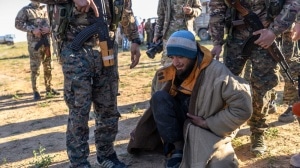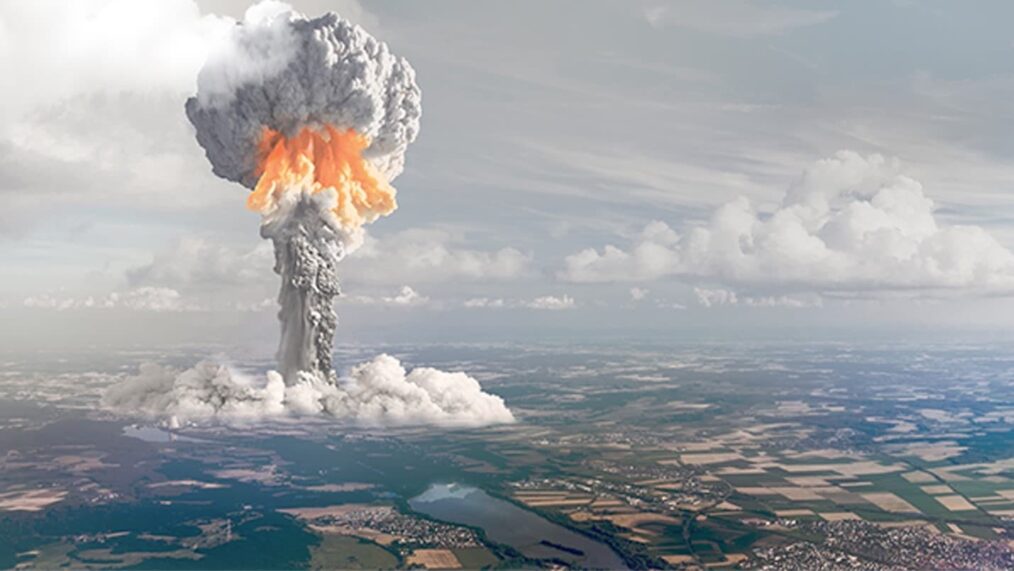The Israeli and Palestinian conflict is one of the most intense disputes of the century. It is rooted in issues of land and sovereignty, national pride, religion, and governance. The dispute resulted in the existence of two competing governments in the Palestinian territories, one in the West Bank controlled by the Palestine Liberation Organization and one in the Gaza Strip controlled by the radical militant group Hamas. Many agreements have been brokered since 2007 to unify both governments, but all have failed. In January 2019, the Prime Minister of the Palestine Authority government, Rami Hamdallah, tendered his resignation, reflecting the rise of public displeasure over failed efforts to reunite the government. Hamas and the Palestinian Authority (PA) have long rivaled each other for power over Palestinian territories. Hamas, refusing to renounce violence, is not just a radical Islamic group but a political faction with parliamentary seats. Their rise and growing popularity before the 2006 parliamentary elections reflected Palestinian sense of alienation from their government’s efforts to rebuke the Israeli occupation. Most significantly, it showed that Hamas’s embracement of radicalism and militancy resonated well with many Palestinians. But how and why did Hamas’ popularity grow?
The events surrounding the initial creation of Israel in 1948 and the Six Day War of 1967 may put the conflict and rise of Hamas in perspective. Even though they are 19 years apart, both events are emblematic of the complexity and fragility of peace prospects between Israel and Palestine, a process that the PA has been embracing and Hamas has been rejecting.
Towards the end of the 19th century, the so-called Jewish question was articulated as a predicament: could Jews ever find acceptance as Jews in a nation made up of non-Jews? Most Eastern European Jews did not believe they could assimilate or ever be accepted in any non-Jew nation. Zionism, an Eastern European phenomenon, quickly emerged as a response to that predicament and emphasized the need for a central Jewish home. That led to the settlement of Jews in Palestine, igniting issues of belonging and sovereignty. Pressured by the United States, the United Nations voted for a partition proposal that divided the land into seven parts, three for the Jews, three for the Arabs, leaving Jerusalem under UN control. As many as 700,000 Palestinians either fled the region or were driven out. As they failed to regain the territory, Palestinians refused to assimilate and demanded a return to their home land. Their efforts were futile and Arab states eventually signed separate armistice agreements with Israel in 1949.
The question of land has always been center stage in the struggle between Israel and Arab counties. It has greatly influenced the concept of Zionism and Arab nationalism. The question of land and sovereignty: who leaves and who stays? Who has the right? Who is stronger? That has become a central issue in Arab nationalist grievances, one that still controls both the foreign relations between the Israeli and Arab governments, and local relationship between Jews and Arabs.
The Six Day War of 1967 was a brief conflict between multiple Arab states and Israel which ended in the defeat of the Arab coalition led by Egypt, Jordan, Syria and Lebanon. Israel’s victory allowed it to capture Sinai, West Bank, Gaza Strip, and the Golan Heights.
It also led to the absolute humiliation and loss of legitimacy of Arab leaders, specifically signaled the end of Arab nationalism personified by President Gamal Abdel Nasser of Egypt. It forced Syria, Jordan and Egypt to accept a cease-fire proposed by the UN Security Council after enduring very heavy losses. Finally, it created more political refugees and brought one million more Palestinians under Israeli rule.
The Israeli-Palestinian conflict, exacerbated by the Six Day War and the expansion of settlements in Palestinian territories increased existing hostilities and complicated peace prospects. Arab defeat in 1967 alone had significant territorial and demographic ramifications. Sinai and the Gaza Strip were captured from Egypt. Israeli control over the strip meant that 90 percent of the 360,000 Palestinians who lived there have become refugees. The West Bank was a more integral region. It is about one-quarter as large as pre-1967 Israel and it gave Israel control over territories that had been allocated for Palestine by the UN in 1947. By the end of 1967, Israel controlled all of the land that had been previously allocated for a Palestinian state in 1948 and more than a million Palestinians were living under Israeli control. Furthermore, Israel separated East Jerusalem from the rest of the West bank and the government announced the unification of Jerusalem under Israeli control, thereby removing all barriers and military installations that divided the city in half. Israel also announced the application of Israeli law in all Palestinian area.
The 1967 war gave the international community new incentives to address the Arab-Israeli conflict. Various draft resolutions were proposed in the UN and many were rejected by both sides. Perhaps the most important resolution was UNSCR 2334. It called for the withdrawal of Israeli forces from territories annexed as a result of the 1967 war, the termination of aspects of sovereignty for any state in the area, guarantee of civil freedoms for all citizens and a “just settlement of the refugee problem.” The vagueness of each demand lead to disagreements over how the resolution should be implemented. The Arab states expectantly wanted Israel to begin withdrawal from captured areas and the Israelis demanded the Arab states recognize Israel first. Extremely distrustful of one another, each side did not want to be first to surrender. This distrust continues to underline Arab and Israeli relations today as well.
Continuous defeat and failure to restore Palestinian land and rights gave Hamas an opportunity to influence the Palestinian people. It provided Hamas with a source of secure funding and recruitment as they exploited Palestinians’ frustration. Hamas was also uniquely effective at delivering and offering services to the people of Palestine which increased public content with the radical group.
Hamas’s primary objectives have been the complete destruction of the Israeli state and the establishment of a sovereign Palestinian state on the 1967 borders. They have continuously rejected any two-state solution, refusing any negotiations with Israel. The PA’s goal is similar in that it wishes to create a Palestinian state on the1967, but they believe in negotiations with Israel and have renounced militancy. Hamas on the other hand embraced direct confrontation with Israel. Their tactics include suicide bombings, rocket attacks, military blockades, etc.
In 2006, they participated in national elections of the Palestinian Legislative Council, signaling their intention to become a represented political party. They won a slight majority of seats which put them in a commanding position for the Gaza Strip. This led to a brief unity with the PLO which soon disintegrated as Hamas refused to accept previous agreements the PLO negotiated with Israel. The Mideast Quartet, an ongoing diplomatic effort led by the United States, United Nations, European Union, and Russia, responded to Hamas’ electoral victory in 2006 by offering support only if Hamas renounced violence, recognized Israel and abided by past Mideast agreements. Hamas rejected all three pillars prompting foreign nations to freeze aid to Palestine. Tensions between both factions ultimately escalated into a civil war that divided Palestine even more: Gaza became independently governed by Hamas and the West Bank fell under the PLO’s governance. Peace talks have been initiated multiple times since then, but always disintegrated due to internal rifts and external pressures.
Hamas’s rejection of any agreement between Israel and Palestine is not only due to their ideological beliefs. Hamas is also fearful of losing its power if it embraces negotiations. Hamas came to power because they capitalized on the PA’s weakness and willingness to compromise with Israel. Even attempting negotiations would open the door to rivalries to challenge Hamas’s rule just like Hamas challenged the PA in 2006.
The question of sovereignty and land, mistrust that both Palestine and Israel will fulfill their promises, the divide between Hamas and the PA, and both of their eagerness to control the levers of power have always and will continue to put a dent in peace efforts. It will also continue to alienate Palestinians towards militancy as they attempt to restore their human rights and sovereignty from Israel.






